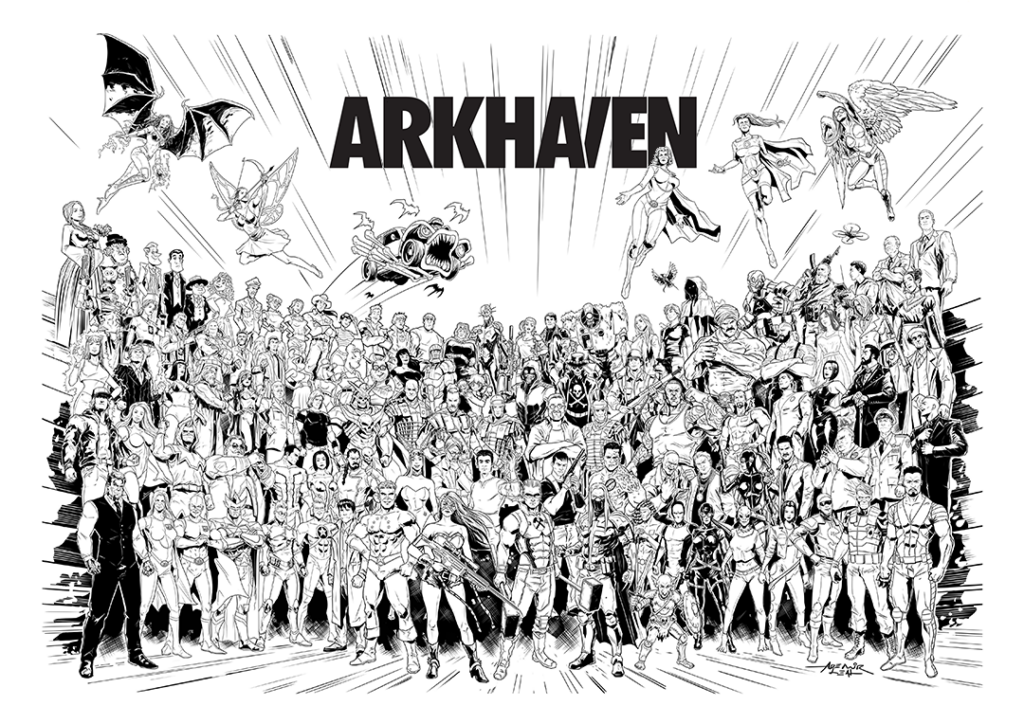Comics Are the Foundation of Civilization.

REPOST 4/28/2023 For our second anniversary here at Arkhaven, I decided to repost the article I ran the day before we launched two years ago. Yes, the title was slightly hyperbolic but I made my case for it. And we at Arkhaven have a mission to preserve civilization to the extent that we can. Yes, the snooty like to look down their noses at pop culture but I assure you, when thee opera started it was basically a soap opera and if you look at the stories it still is one. Pop culture IS the culture. Why do you think they fight so hard to control it? Or come down so hard on our contributions to it? In end it doesn’t matter because classic stories write their own reviews.
At this point, Arkhaven easily has a bigger audience than DC and Marvel.
**********
Comics were how the whole business of moving out of caves, growing crops, and building cities got started.
Without comics, we would never have had a means of passing on our personal experiences to our descendants, or keep records, or count to a number that was higher than twenty. They are that important.
The Altamira cave paintings are nearly the oldest in the world at 35,000 years of age. These images tell tales of mighty hunts, dangerous beasts, and swift-footed prey. When the paintings were first discovered in 1879, the quality of the art was so good that its discoverer was immediately accused of fraud. Understandably so.
The Altamira drawings are clearly the end result of a long tradition of artwork. Using only charcoal, iron ore, and ochre these artists of proto-Spain created images that used shading, contrast, and various intensities of color to create a rough three-dimensional effect.
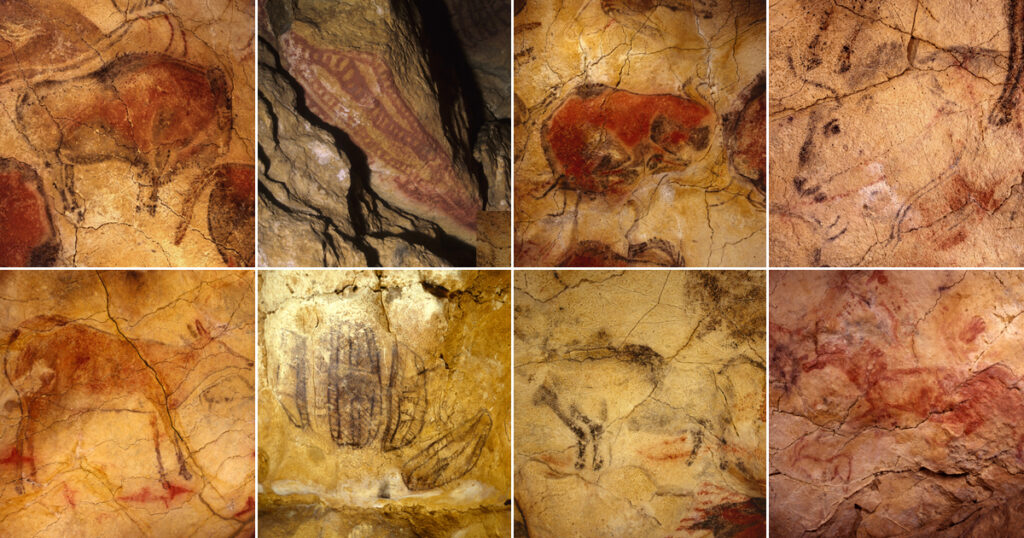
The cave paintings at Lascaux in France are even more impressive, having been painted over the course of several generations. And given the level of sophistication of the works, it couldn’t have been a first attempt. This was an established school of art.
These frescoes gave us, their remote posterity the only images we will ever have of extinct Steppe Bison in magnificent herds or the towering Megaloceros deer or the European Rhinoceros in all its power.
The artists even signed their work.
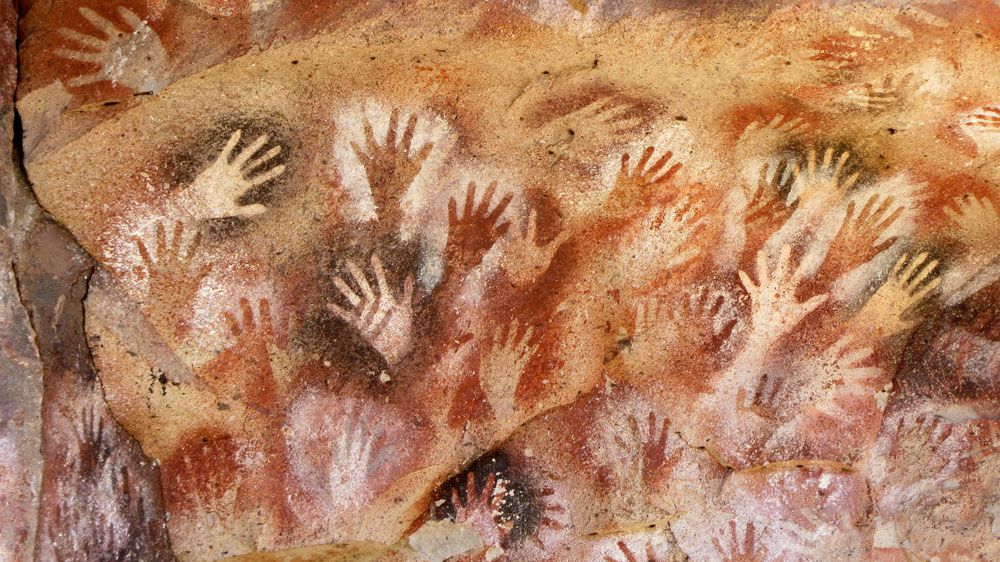
This was art acting as (among other things) a means of communication, and it still works. We were meant to understand the tales these earliest of comics were meant to convey. And we do.
A few thousand years later, art became not just a means of not only storytelling but also record keeping.
There are quite a few Egyptologists who are firmly of the opinion that Scorpion, the Dynasty Zero king of Upper Egypt who got the ball rolling for Narmer, had to have been several kings who all had the same name. Their reasoning is understandable, but I get the feeling some of this is projection. It all comes down to, “he accomplished too much all by himself to have been one man.” By that thinking, the Mongol Empire could never have been created by a single individual named Genghis Khan. My own view is that it is a lot more likely that one relentless man with a vision was the real driving force.

If it was one man, the biggest thing he had going for him was not his ferocity at arms but his ability to organize and invent new ways to organize.
The first system of Egyptian writing was found at Abydos. Now I am using the term “writing” very loosely here. The proto-hieroglyphs found on tags there were more like heraldry than a real attempt at formal communication. It was just a series of pictures declaring that (for example) these twenty urns of grains were sent in tribute by the people who live in “the place with still water, rushes and Ibis birds,” or these forty urns of Beer are from the people who live on “the mountain with falcon birds.”
So, yes, I’m afraid that comics are also responsible for the first successful system of taxation.
Off the top of my head, I can’t think of any of the pre-bronze writing systems that didn’t get its start with pictographs.
The oldest surviving written sentence dates from the Second Dynasty of Egypt on the tomb of Set-Peribsen.
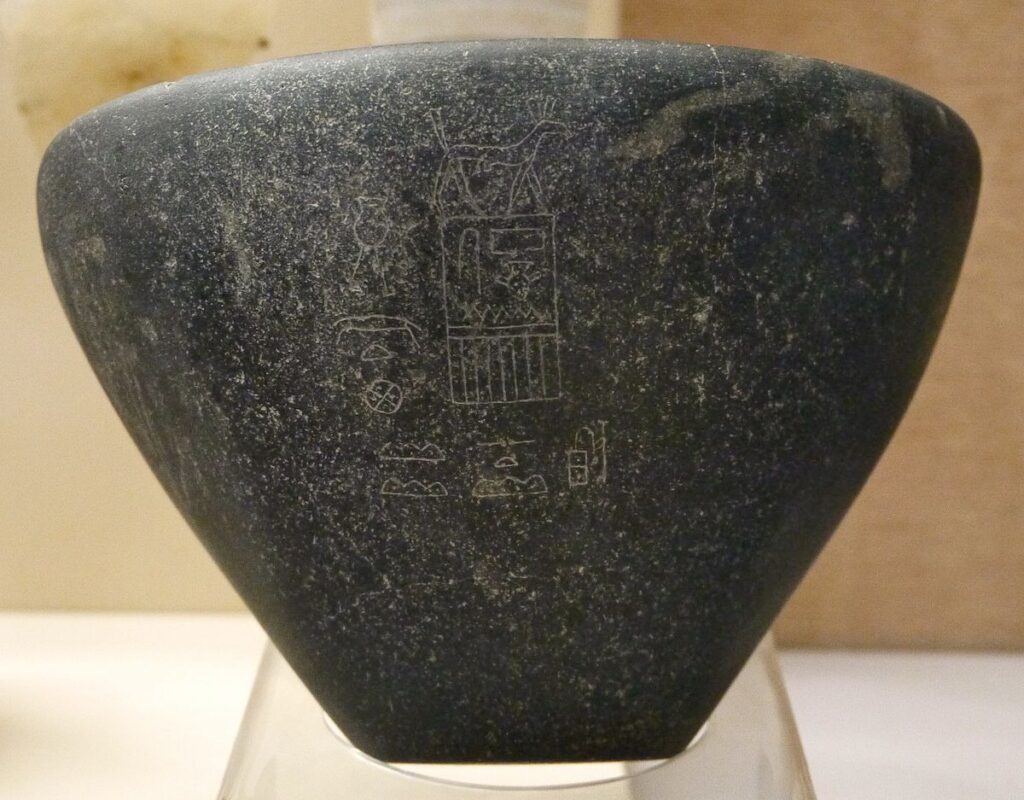
Interesting that he chose Set instead of Horace for his patron/avatar. I wonder if that was customary for a usurper?
Beloved Readers: Cool. Also, who cares? Hieroglyphics were a dead-end. Any system of writing that requires you to learn 5,000 images is a means of communication for the few, not the masses. Priests and kings will be the only ones with time to learn it. It’s fundamentally limited and any civilization that uses it will go into high population-low production stasis eventually.
Dark Herald: Quite true. However,
“The first signs of the Phoenician alphabet found at Byblos are clearly derived from Egyptian hieroglyphics and not from cuneiform. The 22 Phoenician letters are simplifications of Egyptian hieroglyphic symbols, which took on a standardized form at the end of the 12th century BCE. Like Hebrew and Arabic, Phoenician was written from right to left, and vowels were omitted (which makes deciphering Phoenician even harder).”
Getting back to art as a means of storytelling. When Pompeii was first unearthed peoples whose lives had ended in fire and ash seventeen hundred years ago were on display again. Family members having a bath. A riot between the citizens of Pompeii and Nuceria over gladiator games, sort of like a slugfest between “football hooligans.”
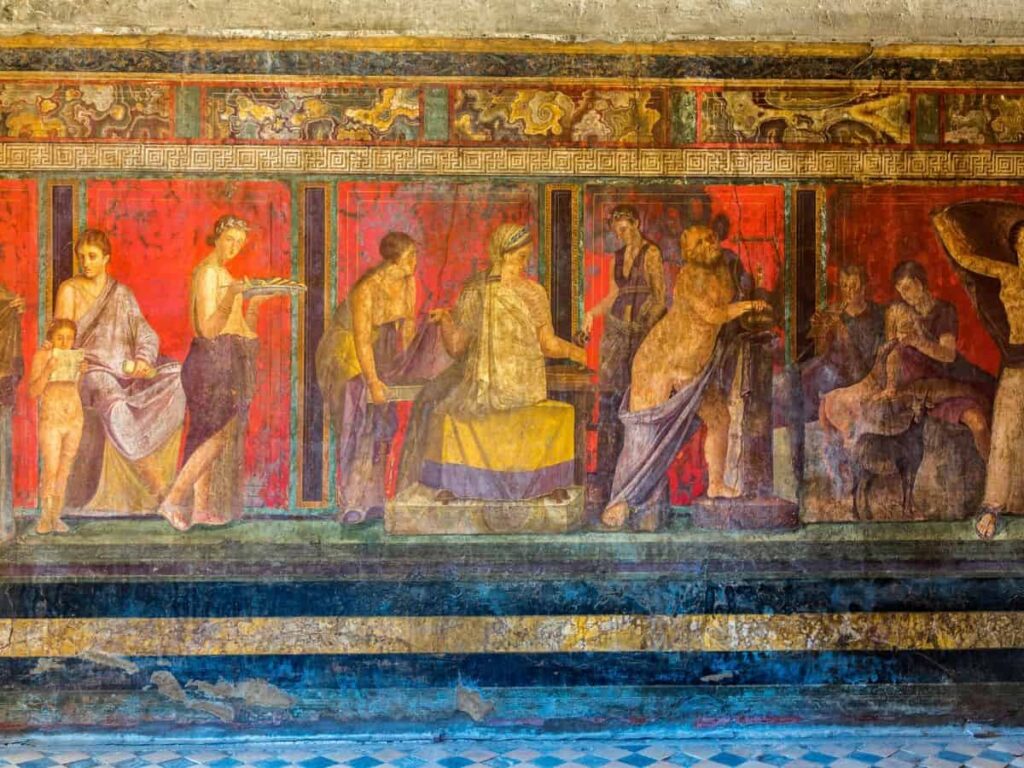
Alongside those were scenes from Songs of the Iliad with Wretched Cassandra being dragged from the statue by Ajax and the duel between Achilleas and Hector. All of these tales were easily recognizable by the men who discovered these artworks
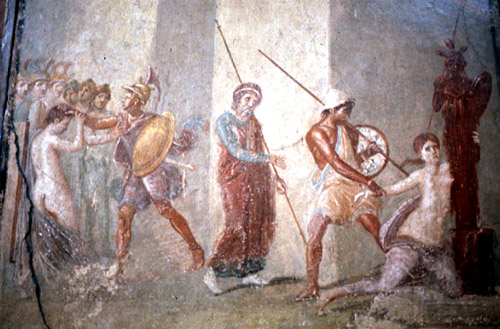
Art as storytelling moved on.
It’s interesting to note that as art became more refined, during the Renaissance…

it became much more static. Just trying to lock down one moment in time rather than tell a story. However, at the same time, art was becoming more refined, with color, line, shading, gesture, and symbolism aiding the artist in telling an entire story in one scene.
In the late 1700s and early 1800s, illustrated adventure books began cropping up occasionally. These should be considered proto-comic books, given that they were all one-off pieces.
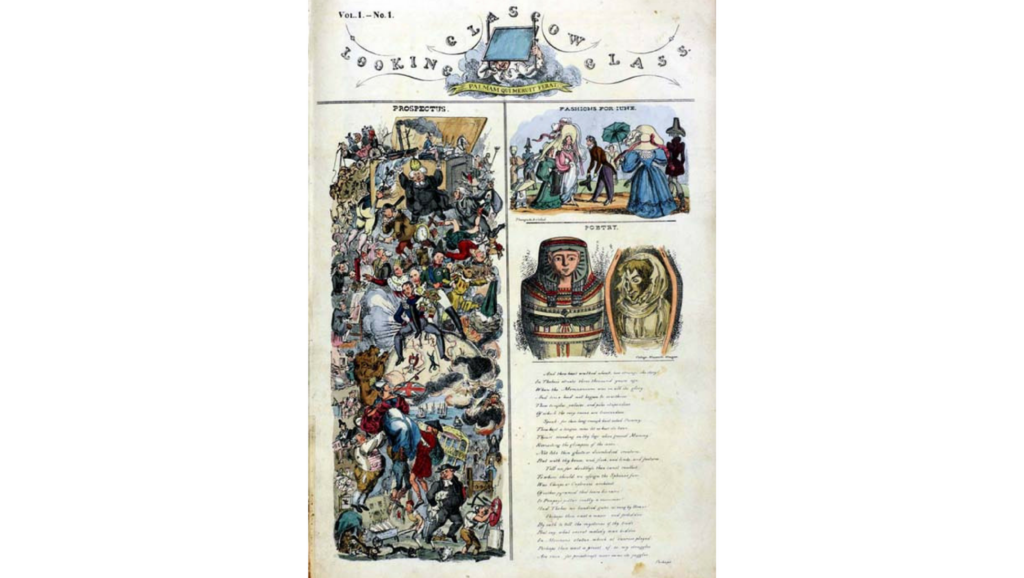
Intriguingly, the very first of these was published in 1755 in Japan, the Kinkin sensei eiga no yume.’
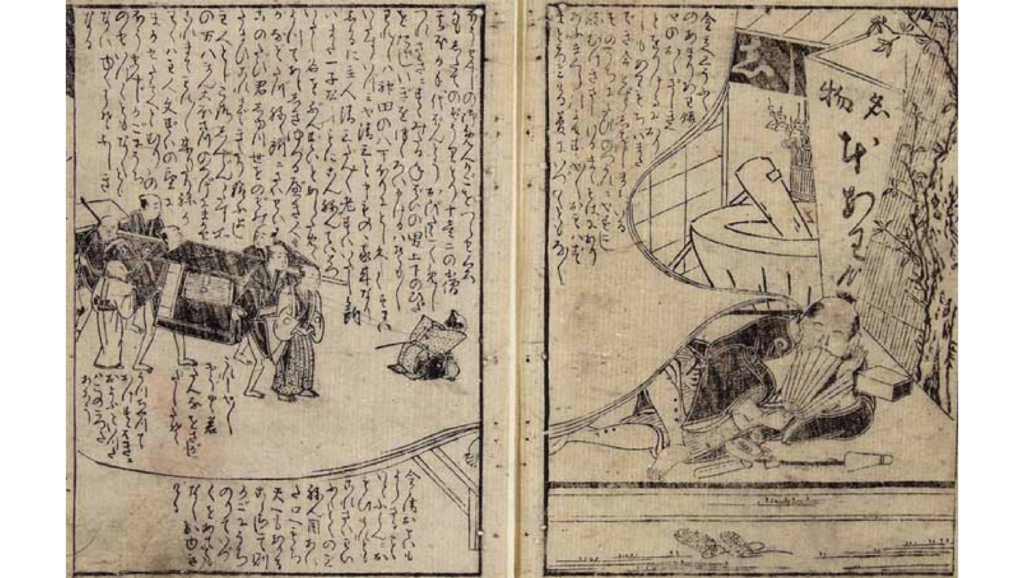
In the 19th century, newspapers began publishing sequential art telling stories that were meant to create laughs. That’s where the “comic” in comic strips came from. “Every day in American newspapers, for most of the 20th century, there were at least 200 different comic strips and cartoon panels, which makes 73,000 per year.”
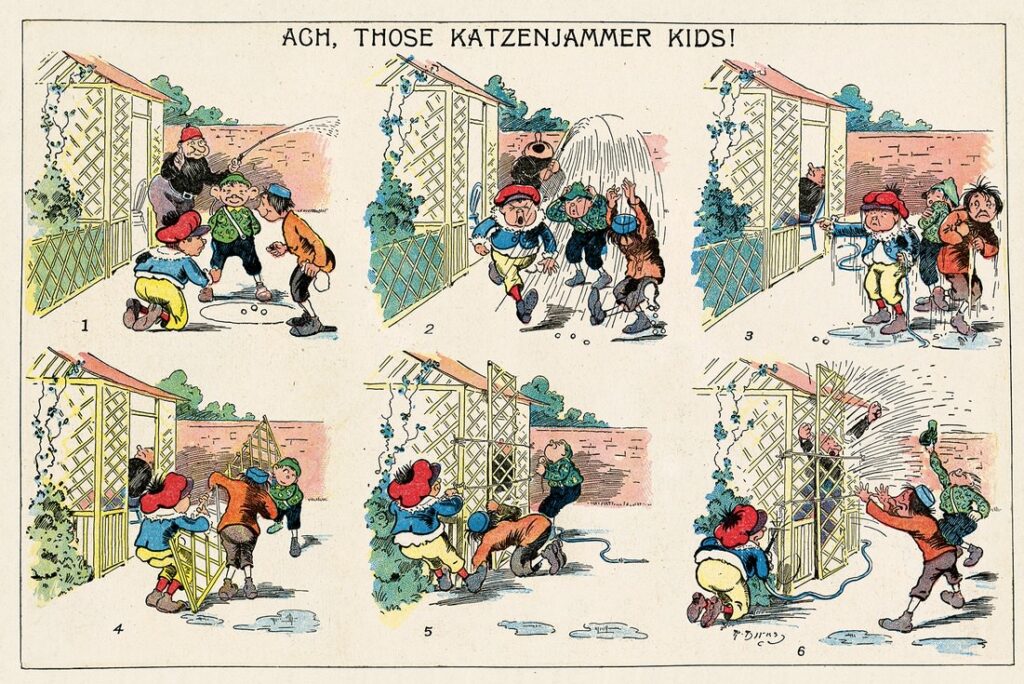
So not a small thing. However, once that paper was done being read and then recycled to line the parquet cage, those comics were gone. Unless you made a special effort to preserve them, it was difficult to read them more than once.
It took until 1933 for someone to solve this obvious problem with the publication of Funnies on Parade. It was an anthology of reprinted comic strips from the newspapers.

The next year saw the monthly publication of Famous Funnies. A pamphlet that was printed in what would become the standard comic book size with the Depression-friendly price of 10 cents. It was still just reprints.
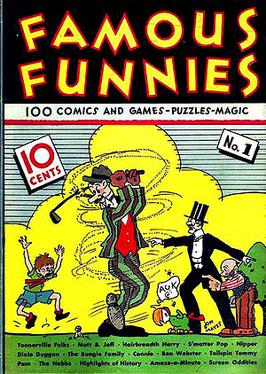
However, next year came New Fun Comics #1 by a company that eventually renamed itself DC Comics. It was the first publication of its kind with all original content. This was genesis for the comics industry.
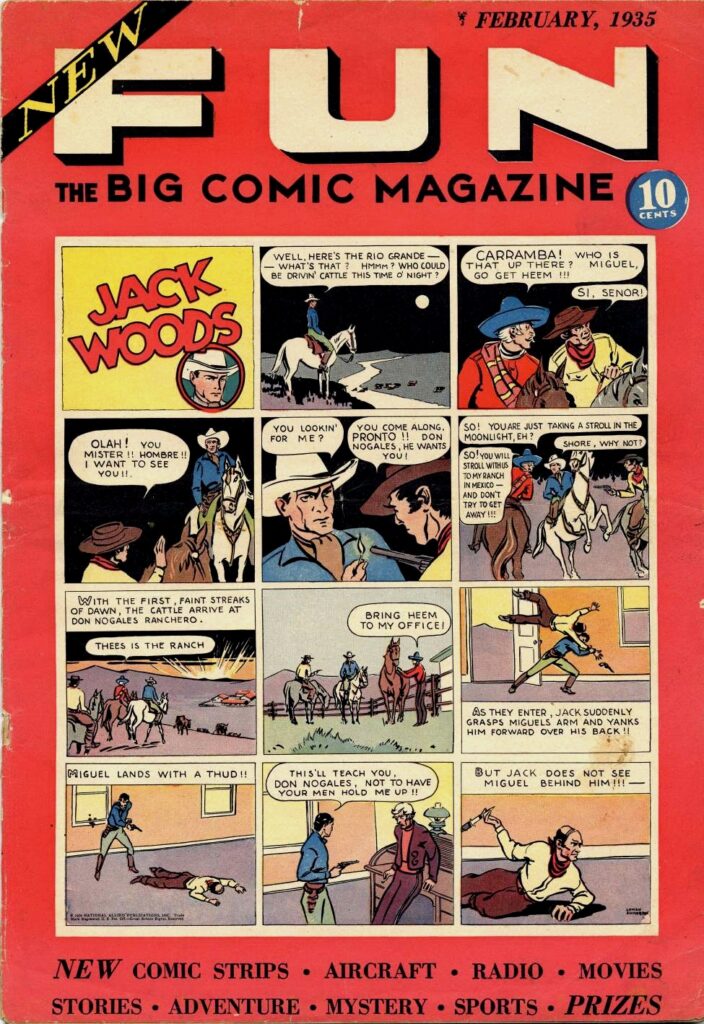
It would be another four years before that company published Action Comics #1

This is the past of comic books.
Tomorrow we all find out about their future.
